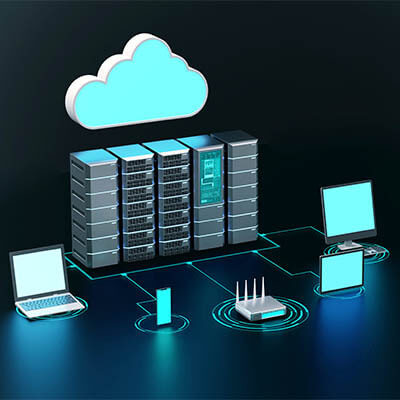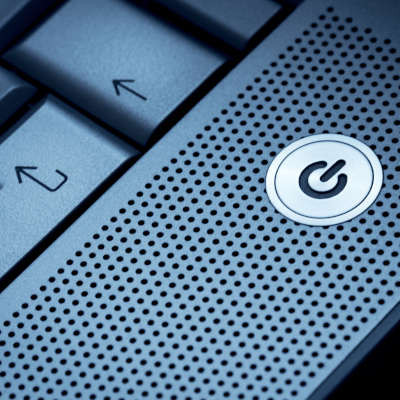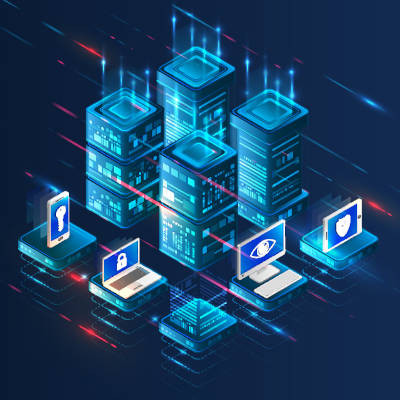BNMC Blog
We might place the onus on business technology solutions on this blog, but once in a while we like to talk about technology that is just plain cool. Today is one of those days. With this new wearable utilizing artificial intelligence technology, you can monitor your health, making for a very interesting application of the technology.
The laptop is one of the most useful innovations in modern computing—not only is it capable of accomplishing most (if not all) modern workplace tasks, it does so while offering the portability that today’s mobile operations require. However, these productivity workhorses don’t last forever…but how do you know when the time has come to upgrade?
Moore’s law has been prophetic, but nothing lasts forever. When Gordon Moore predicted that transistors inside of a dense integrated circuit would double every 18 months in 1965, it seemed like a very aggressive prediction. 57 years later, it has come to pass, with computing speeds doubling every year and a half. Now, it seems like the tried and true prediction is coming to a close, so we thought we’d look at how technology will continue growing when Moore’s law actually becomes obsolete.
Let’s say you are going about your workday when your computer suddenly crashes. Your first reaction might be to reach out for support, and if so, then you are correct; we can’t let you suffer from downtime for too long! Let’s go over what the acquisition of support might entail, even if the problem you are experiencing cannot be solved through a remote support option.
Despite Microsoft’s comments several years back, Windows 10 is indeed not the final iteration of Windows. Microsoft has officially let the cat out of the bag with Windows 11, the latest in its line of PC operating systems. We urge your business to consider the minimum requirements for upgrading to Windows 11 now while Windows 10 is still supported. Let’s take a look at the system specifications and requirements for Windows 11.
For companies that depend on their computing, the workstation plays an important role. The problem with them is that spending big money on computers that are used for general productivity is not cost effective, but if they don’t have the computing power needed to successfully run the software that your company uses, they won’t do you any good. Today, we will talk a bit about hardware considerations you will need to make when choosing workstation hardware, and the cloud-hosted options that may be a good option for your business.
Businesses need to make a decision about where they want to host their central infrastructure, and with so many options available to them nowadays, it’s often a matter of the demands on the data and applications required. Really, the decision comes down to two options: host your central hardware onsite or host it in the cloud. Let’s take a look at the debate now.
Today, every business needs a certain amount of technology. The more that people depend on the Internet to manage their affairs and procure goods and services, the more businesses will need to focus on getting the IT infrastructure in place to help them succeed. Over the past several years we have begun to see a lot of businesses dipping their toe into the cloud computing pool. Many started with cloud backup and moved to some type of hosted software platform like hosted email through Outlook or Gmail or cloud-based productivity suites offered by Google and Microsoft. Today’s business is moving past these platforms and actively hosting their computing infrastructure online. It was only a few short years ago that this strategy was looked upon as far too risky. Let’s take a brief look at hosted infrastructure and its benefits.
Nearly everyone uses Wi-Fi. Wireless gives people the increased flexibility to use their mobile devices in more places. If your business’ Wi-Fi isn’t set up properly, you’ll find that your coverage will be lacking. Today, we thought we’d give you a few tips on how to set up your Wi-Fi connection so that it works best for your business.
The COVID-19 pandemic has been jamming up business progress for over half of 2020 and it has led a lot of organizations to push off any new technology investments or to find hosted solutions that will allow them to meet their current business demands. On the surface, these cloud investments are a great way to secure the resources your business needs, but it can have an alternate effect. Today, we take a look at how cloud computing can be just too expensive, even if it doesn’t carry large upfront costs.
Nintendo has announced to owners of their Switch consoles that, if their devices aren’t charged up at least every six months, battery life could be impacted. Now, bear with us: while we realize that this may not seem to be all that pertinent to businesses, it brings up an important practice for businesses to follow: regularly charging even the devices that are used less often.
When it comes to their necessary hardware, there are some things that most businesses generally have in common, differences in scale notwithstanding. As such, businesses of all sizes should consider the same things while putting together their IT infrastructure. For this week’s tip, we’re going over these considerations to benefit your hardware planning and implementation.
Small businesses may not always need servers as much of their business computing can be done over the LAN with storage based on a home PC. When your business grows large enough to need its very first server, or is large enough for a server and hasn't made a move, knowing what your options are can make all the difference. Today, we will take you through some things you should know when you are out shopping for a new server.





















